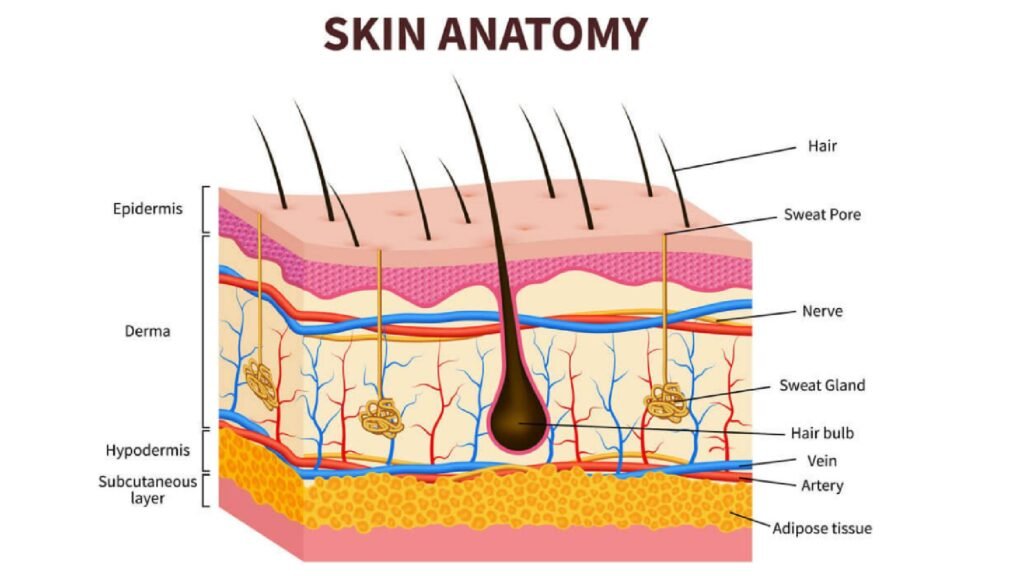To better understand how the skin functions and behaves, it’s important to first examine its structural components.
The skin consists of three primary layers. The epidermis is the outermost layer, made up of keratinocytes – skin cells that serve as the “bricks” of the skin’s protective barrier. This layer shields the body from environmental harm such as UV radiation and toxins, helps retain moisture, and plays a role in immune defense. At the base of the epidermis lies the basal layer, where new skin cells are generated to replace the epidermis approximately every month. Scattered among the keratinocytes are melanocytes, pigment-producing cells responsible for skin color. When exposed to ultraviolet light, melanocytes increase production of melanosomes – small packets containing melanin (brown pigment) – and transfer these to nearby skin cells. This process results in pigmentation changes, such as freckles or sunspots.
Beneath the epidermis is the dermis, a thicker layer rich in collagen and home to structures like hair follicles and sweat glands. Sebaceous glands, located next to hair follicles, secrete sebum, an oily substance that nourishes and protects the skin. Sweat glands help regulate body temperature by releasing sweat, which cools the skin through evaporation. These glands extend through both the dermis and epidermis to reach the surface. The dermis also contains essential blood vessels and nerves woven through its collagen matrix. Additionally, it holds elastin for skin elasticity and fibroblasts, which produce collagen. Overall, the dermis supports temperature regulation, blood flow control, and mechanical protection for underlying structures.
The deepest layer, the subcutis (or subcutaneous tissue), is composed primarily of fat arranged in lobules, separated by connective tissue that houses larger blood vessels and nerves. This layer provides insulation against heat loss and acts as a cushion against physical trauma.
Many skin conditions originate from dysfunction within one of these anatomical layers. For instance, acne develops when a hair follicle becomes blocked, allowing bacteria to multiply. Rosacea, on the other hand, results from the dilation of dermal blood vessels, giving the skin a flushed appearance. Gaining a deeper understanding of your skin begins with a solid grasp of its anatomy.
At our MedSpa located in Ormond Beach and St. Augustine, FL, we emphasize educating patients about the skin’s structure as a foundation for diagnosing and treating a variety of conditions. By understanding how each layer works, individuals can make better choices about skincare and seek the most effective treatments.

